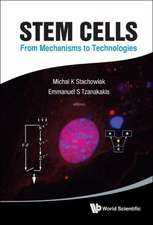Advanced Surface Coatings: a Handbook of Surface Engineering
Autor A. Matthews Editat de David Rickerbyen Limba Engleză Paperback – 5 noi 2012
Preț: 893.53 lei
Preț vechi: 1089.67 lei
-18% Nou
Puncte Express: 1340
Preț estimativ în valută:
170.100€ • 177.87$ • 141.17£
170.100€ • 177.87$ • 141.17£
Carte tipărită la comandă
Livrare economică 14-28 aprilie
Preluare comenzi: 021 569.72.76
Specificații
ISBN-13: 9789401053525
ISBN-10: 9401053529
Pagini: 388
Ilustrații: XIII, 368 p.
Dimensiuni: 152 x 229 x 20 mm
Greutate: 0.52 kg
Ediția:1991
Editura: SPRINGER NETHERLANDS
Colecția Springer
Locul publicării:Dordrecht, Netherlands
ISBN-10: 9401053529
Pagini: 388
Ilustrații: XIII, 368 p.
Dimensiuni: 152 x 229 x 20 mm
Greutate: 0.52 kg
Ediția:1991
Editura: SPRINGER NETHERLANDS
Colecția Springer
Locul publicării:Dordrecht, Netherlands
Public țintă
ResearchCuprins
1 Introduction.- 1.1 Surface engineering: the key to optimised performance.- 1.2 The main surface engineering technologies.- 1.3 Coating structure and characterisation.- References.- 2 Use of plasmas in deposition technologies.- 2.1 Introduction.- 2.2 Processing plasmas.- 2.3 Plasmas in the presence of magnetic fields.- 2.4 Microstructure of sputter deposited films.- 2.5 Conclusions.- References.- 3 Ion implantation and ion-assisted coating.- 3.1 Introduction.- 3.2 Beam-induced processes.- 3.3 Tribological applications.- 3.4 Applications to corrosion resistance.- 3.5 Equipment.- 3.6 The economics of ion beam processing.- 3.7 Conclusions.- References.- 4 Evaporation.- 4.1 Introduction.- 4.2 Practical aspects of evaporation processes.- 4.3 Coating thickness distributions and uniformity.- 4.4 Evaporation principles.- 4.5 Further considerations in electron beam evaporation.- 4.6 Selected applications for evaporative techniques.- 4.7 Conclusions.- References.- 5 Sputter deposition.- 5.1 Introduction and historical perspective.- 5.2 Basic aspects of sputtering.- 5.3 Sputtering techniques.- 5.4 Plasma characteristics and ion bombardment.- 5.5 Process control.- 5.6 Applications of sputtered hard coatings.- 5.7 Industrial coating systems.- 5.8 Future trends.- References.- 6 Plasma-assisted physical vapour deposition.- 6.1 Introduction.- 6.2 The DC-diode argon discharge.- 6.3 Bombardment of the cathode in argon discharges.- 6.4 Practical ion-plating discharges.- 6.5 Practical considerations and system details.- 6.6 Applications and case studies.- 6.7 Conclusions.- References.- 7 Thermally activated chemical vapour deposition.- 7.1 Introduction.- 7.2 Principles of CVD.- 7.3 The CVD system.- 7.4 CVD reactors.- 7.5 Design of a CVD process.- 7.6 Adhesion.- 7.7 Rate-limiting steps.- 7.8 Nucleation.- 7.9 Deposition mechanisms.- 7.10 Morphology and microstructure.- 7.11 Applications of the CVD technique.- 7.12 Summary and concluding remarks.- References.- 8 Plasma-assisted chemical vapour deposition.- 8.1 Introduction.- 8.2 Discharge chemistry and physics.- 8.3 PACVD equipment requirements.- 8.4 Applications of PACVD.- 8.5 Summary 215.- References.- 9 Thermal spraying.- 9.1 Introduction.- 9.2 Thermal spraying.- 9.3 Substrates and surface preparation.- 9.4 Coating properties.- 9.5 Applications.- 9.6 Summary.- References.- 10 Laser surface treatment.- 10.1 Introduction.- 10.2 Practical aspects of laser processing.- 10.3 Laser techniques.- 10.4 Current and future applications of laser processing.- 10.5 Conclusions.- References.- 11 Characterisation of coatings and interfaces.- 11.1 Introduction.- 11.2 Electron spectroscopies.- 11.3 Electron microscopies.- 11.4 Ion spectrometry and microscopy.- 11.5 Photospectroscopies and microscopies.- 11.6 Conclusions.- References.- 12 Evaluation of coatings.- 12.1 Introduction.- 12.2 Mechanical property assessment.- 12.3 Summary and future developments.- References.- 13 Market perspective and future trends.- 13.1 Introduction.- 13.2 Future directions in surface engineering.- 13.3 New materials and future markets for surface engineering.- References.












